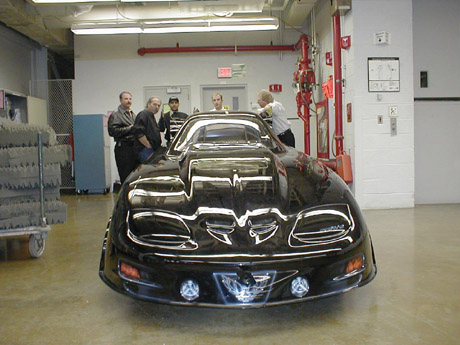|
|
|
|||||||||||
|
|
"Simply put, the wind tunnel allows us to make multiple runs on a racetrack without having to make runs on the racetrack," explained Hogan. "The more pulls we make in the wind tunnel, the more we learn and the sooner we're able to formulate a setup that will give us a fast racecar. Plus, you can't get the kind of consistent data on a racetrack that we get in the wind tunnel. The track temperature changes, the weather changes, a lot of things change. Only in the wind tunnel do the conditions remain static so that we can accurately compare one body to the next." At four o'clock the shift is over. Team members remove Sarver's Firebird
Funny Car from the platform while GM engineers replace it with a production
Chevy Venture. Inside the control room race engineers are ecstatic over
the results, what they've been able to ascertain from the old racecar,
and the tremendous potential they see in the second-generation Firebird
Funny Car. What they've learned today in the wind tunnel promises to
make for an excitement-filled summer on the track.
|
|
||||||||||
|
Copyright 1999-2001, Drag Racing Online and Racing Net Source |
||||||||||||



